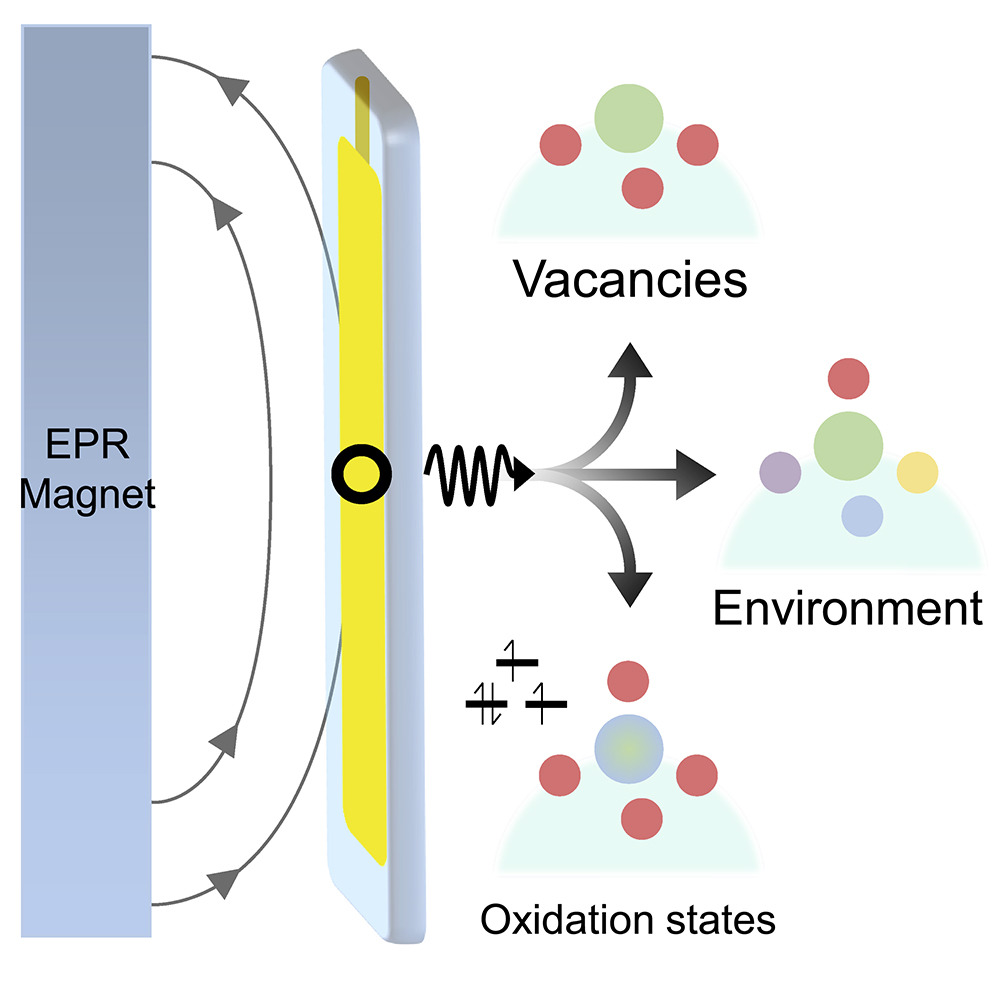ESR/EPR Spectroscopy Analytical Service
-
- Presence, structure, and concentration of radicals and paramagnetic species
- Magnetic interactions between electrons and nearby nuclei
- Impurity, defect, and vacancy characteristics in material
- Electron migration behaviors and reaction pathways in dynamic processes
Electron Paramagnetic Resonance (EPR), also known as Electron Spin Resonance (ESR), is a magnetic resonance technique that detects unpaired electrons in materials. By monitoring the absorption of microwave radiation by paramagnetic species in the presence of a magnetic field, EPR provides valuable insights into the presence, concentration, and microenvironment of radicals, transition metal ions, and defect states. Compared to Nuclear Magnetic Resonance (NMR), EPR offers higher sensitivity for detecting unpaired electrons and is widely used in physics, chemistry, materials science, biology, and environmental research.
MtoZ Biolabs offers professional ESR/EPR Spectroscopy Analytical Service powered by advanced instrumentation and an experienced scientific team. Our ESR/EPR Spectroscopy Analytical Service encompasses sample preparation, data acquisition, spectral interpretation, and technical consulting to help clients uncover structural and functional characteristics of paramagnetic systems.
Technical Principles
EPR/ESR spectroscopy relies on Zeeman splitting, where energy levels of unpaired electrons split in an external magnetic field. Microwave irradiation induces transitions between these levels, producing detectable resonance signals.
By analyzing resonance field (g-values), linewidth, hyperfine splitting (hfs), and integral intensity, EPR reveals:

Bau, J. A. et al. iScience. 2022.
Figure 1. Principles of ESR/EPR Spectroscopy
Services at MtoZ Biolabs
MtoZ Biolabs provides a comprehensive ESR/EPR analytical platform with customizable services, including:
✔ Radical detection and quantification: Assess oxidative stress levels, radical generation pathways, and antioxidant stability
✔ Metal ion valence and coordination environment analysis: Identify the electronic states and ligand coordination of transition metals (e.g., Fe, Cu, Mn)
✔ Defect and impurity analysis in materials: Detect holes, impurity ions, and lattice defects in semiconductors, ceramics, polymers, and more
✔ Low-temperature and transient spectroscopy: Acquire spectra of short-lived radicals or intermediates under liquid nitrogen conditions
Why Choose MtoZ Biolabs?
1. Broad sample compatibility: Suitable for solids, liquids, biological tissues, gels, and composite materials
2. High sensitivity: Detect trace radicals or rare metal systems
3. Comprehensive parameter analysis: Quantitative evaluation of g-values, hfs, linewidth, and peak area
4. Custom experimental workflows: Tailored to specific research goals with optimized protocols and data analysis
5. One-time charge: Our pricing is transparent, no hidden fees or additional costs.
Applications
With broad applicability, our ESR/EPR Spectroscopy Analytical Service supports research efforts in chemistry, materials science, life sciences, biomedicine, and environmental science.
· Chemical research: Reveal radical reaction mechanisms and metal catalysis pathways
· Materials science: Analyze defects, impurities, and magnetic properties
· Life sciences: Study the roles of radicals in physiological and pathological processes
· Biomedicine: Evaluate drug stability and oxidative stress response
· Environmental and food safety: Monitor radical formation during pollution or food degradation
Case Study
Case 1: EPR spectroscopy in metal protein and metallodrug research
A study reviewed EPR applications in probing metal-binding environments, redox states, and substrate interactions in metalloproteins and metallodrugs. Despite their structural differences, both systems rely on accurate determination of the electronic structure around metal centers. EPR offers highly specific information to support structural and functional elucidation, showcasing its utility in structural biology, coordination chemistry, and drug discovery.

Eisermann, J. et al. Curr. Opin. Chem. Biol. 2021.
MtoZ Biolabs offers high-sensitivity ESR/EPR Spectroscopy Analytical Service of metal ions in biological systems, enabling insights into metal center coordination and facilitating advancements in metalloprotein and metallodrug research.
FAQ
Q1: Why do signals sometimes appear weak, noisy, oxidized, or absent?
Signal quality in EPR depends on sample concentration, trapping agent levels, catalyst content, reaction time, and light exposure. Accurate sample information enables optimal conditions and better results.
Q2: How can one distinguish between single and multiple radicals or mixed radical-metal signals in an EPR spectrum?
Uniform line widths and consistent peak intensities suggest a single radical source. Varying peak shapes or intensities indicate mixed signals.
Q3: What is the difference between persistent and transient radicals?
Persistent radicals are long-lived and structurally embedded; they yield direct signals. Transient radicals are short-lived (seconds/minutes) and require trapping agents for detection.
Q4: How does temperature affect EPR signals (e.g., for vacancies or radicals)?
Temperature has different effects depending on the material. High/low temperatures may enhance or diminish signal strength. For radicals, room temperature is preferred to avoid solvent freezing or degradation of trapping agents.
If you are planning to conduct ESR/EPR Spectroscopy Analytical Service projects, please contact MtoZ Biolabs for customized solutions. With our complete technical platform and extensive project experience, we accelerate your paramagnetic research and support scientific and translational outcomes.
How to order?







